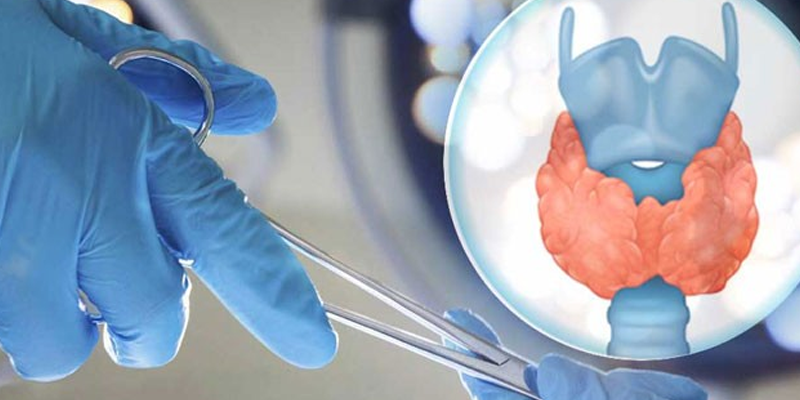
Thyroid Surgery
Thyroid surgery, also known as thyroidectomy, is a procedure to remove all or part of the thyroid gland—a butterfly-shaped gland located at the base of the neck. This surgery is performed to treat various thyroid disorders, including thyroid nodules, goiter, hyperthyroidism, and thyroid cancer. Depending on the underlying condition, different surgical approaches are used. Thyroid surgery is generally safe and offers effective relief from symptoms and long-term control of thyroid-related conditions.
Causes and Indications for Surgery
Thyroid surgery may be recommended for a range of medical reasons. Some of the most common causes and indications include:
– Presence of suspicious or cancerous thyroid nodules
– Enlarged thyroid (goiter) causing breathing or swallowing difficulties
– Overactive thyroid (hyperthyroidism) not controlled by medications
– Recurrent thyroid cysts
– Cosmetic concerns due to neck swelling
– Family history of thyroid cancer or genetic conditions
Symptoms That May Require Thyroid Surgery
Certain symptoms or findings may prompt the need for thyroid evaluation and possible surgery. These include:
– Persistent swelling or lump in the neck
– Hoarseness or voice changes
– Difficulty swallowing or breathing
– Rapid heartbeat, weight loss, or nervousness (in hyperthyroidism)
– Fatigue and sluggishness (in some thyroid dysfunction cases)
– Abnormal thyroid function tests or imaging results
Diagnosis
Diagnosis involves a thorough clinical evaluation, blood tests to assess thyroid hormone levels (TSH, T3, T4), and imaging studies such as ultrasound or thyroid scans. Fine Needle Aspiration Cytology (FNAC) or biopsy may be performed on thyroid nodules to determine if they are benign or malignant. Based on the diagnosis, your surgeon will decide the most appropriate surgical approach.
Types of Thyroid Surgery
There are different types of thyroid surgery depending on the extent of thyroid removal required:
– Total Thyroidectomy: Removal of the entire thyroid gland, usually recommended for thyroid cancer or large goiters.
– Hemithyroidectomy (Lobectomy): Removal of one lobe of the thyroid gland, commonly performed for benign nodules or small tumors.
– Subtotal Thyroidectomy: Partial removal of the thyroid gland, typically for non-cancerous conditions.
– Minimally Invasive Thyroid Surgery: Performed through smaller incisions, often with the help of endoscopic or robotic assistance, offering faster recovery and less visible scarring.
Recovery and Aftercare
Recovery from thyroid surgery is usually smooth, with most patients discharged within 24–48 hours. Mild discomfort, sore throat, or neck stiffness is common and temporary. Voice changes may occur but typically improve with time. Patients may need to take thyroid hormone replacement therapy if the entire gland is removed. Regular follow-ups and blood tests are essential to monitor hormone levels and recovery.
Final Thoughts
Thyroid surgery is a reliable treatment option for various thyroid disorders, especially when medication is ineffective or when there is a risk of cancer. Early diagnosis and expert surgical care can ensure excellent outcomes with minimal complications. If you have a thyroid lump, swelling, or any related symptoms, consult an experienced surgeon or endocrinologist to evaluate your condition and determine the need for surgery.

